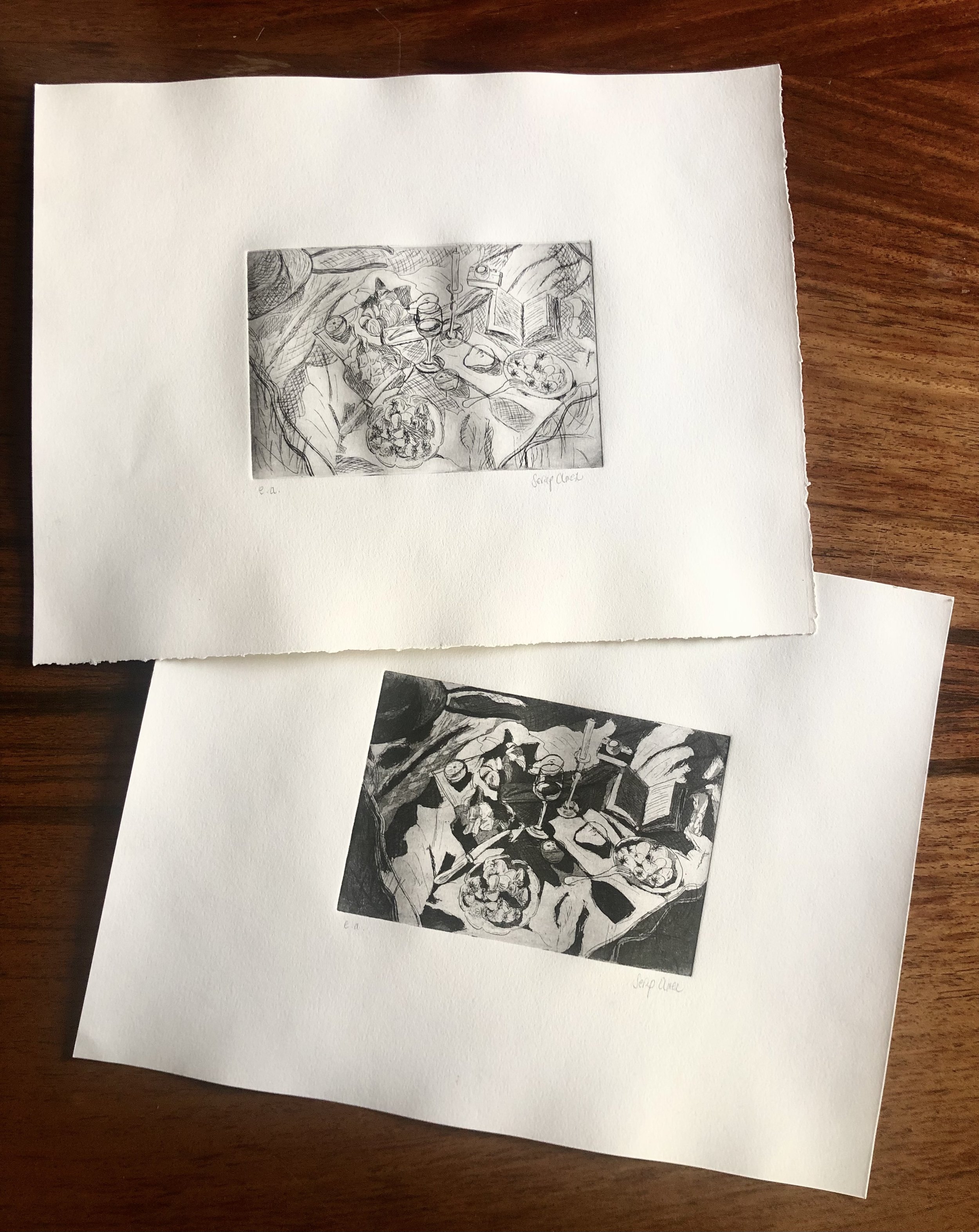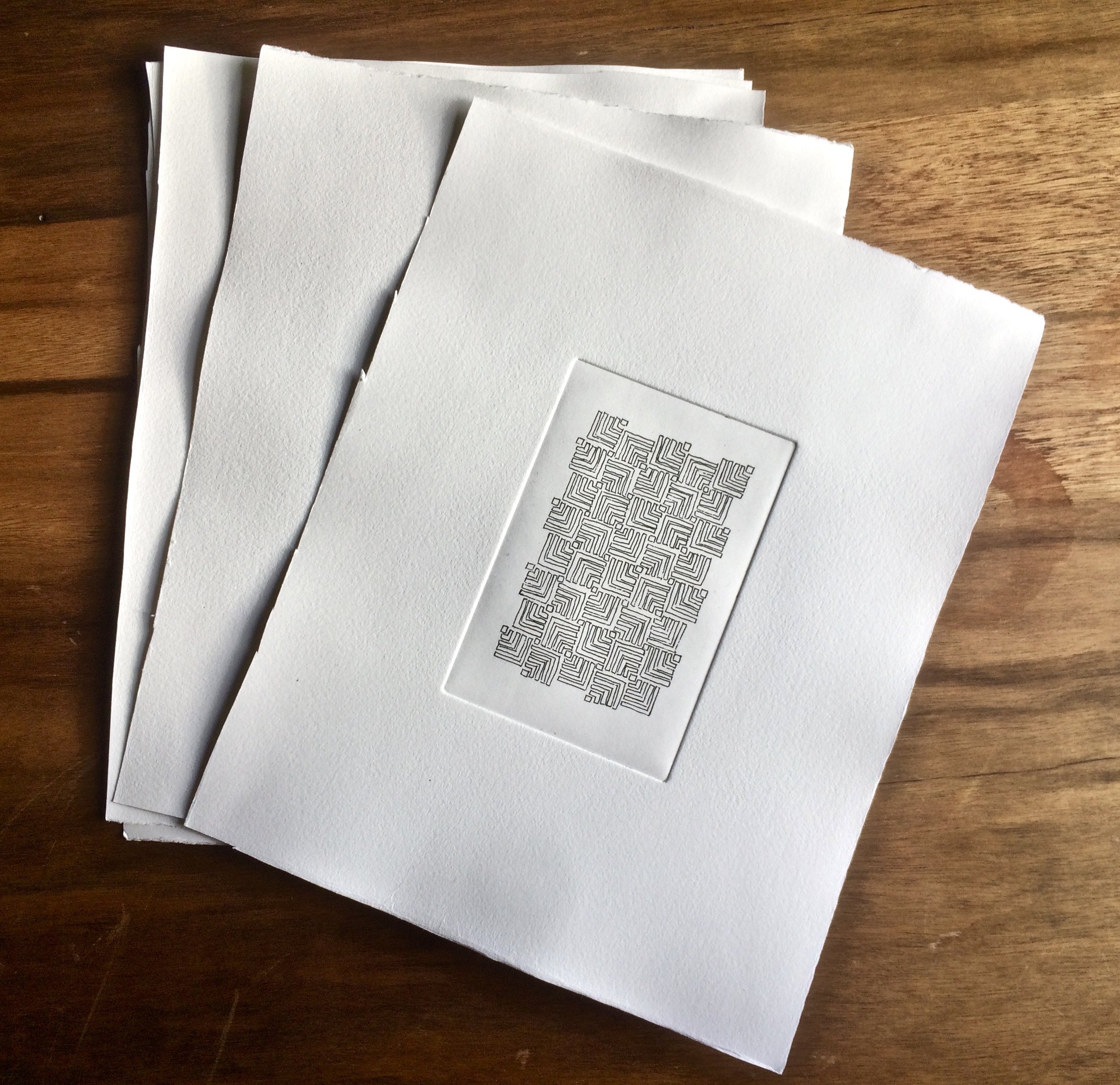My printwork
I use different graphic art printing techniques.
Etchings, drypoint and aquatint
Etching is a printmaking technique where an image is drawn into a surface using a sharp tool. The incised surface exposes the metal and is then etched by submerging the plate in an acid solution. This eats away the exposed areas, leaving the image etched into the metal. This process can create detailed designs that can be reproduced multiple times. I mostly use zinc plates with a resin layer.
With drypoint, the image is engraved into the plate directly. This creates a burr along the edges of the incised lines, which holds more ink during printing, resulting in a rich, velvety texture. I have used this technique on a hard plastic plate and in combination with etching.
Aquatint is a technique that allows for the creation of subtle tonal gradations. This method involves placing a powdered resin on a metal plate, which is then heated to create a textured surface. The plate is immersed in an acid bath multiple times, resulting in various depths of etching. The areas with finer grains of the resin produce lighter tones, while those with larger grains hold more ink and appear darker. For these lighter tones, these areas need to be covered to protect them from getting darker. Usually, I turn my line etchings into aquatint etchings. I mostly use a small brush and expose small parts of my plates for just seconds to acid to create a wide range of tones. Overall, it is a time-consuming process to get to the final result, and I enjoy every second of it.
Above: line etching ‘Picknick in lines’ turned into ‘Picknick in aqua’.
Below: etching process ‘Geometric pattern’.
Drypoint on plastic - ‘Palmtree’
Monoprints
I use handmade stencils and ink to create an image on a smooth surface (usually the backside of one of my etching plates). The image is then transferred onto a piece of paper by applying pressure. Unlike other printmaking techniques, each monoprint is one-of-a-kind due to the variability in ink application and pressure during the printing process.
Moving the stencils around after a first print run, without re-inking the surface, results in different shapes and shades. As they are monoprints, none of the prints are exactly the same within the number of limited editions - especially prints deriving from a second and third run. I, however, try to recreate the image several times.
Monoprint 'Half Circles' - Right/Left’ and monoprint 'Half Circles - Right/Left - Shaken’
I also love working with other techniques, such as embossing with stencils, with and without ink.
Pencil portrait illustrations
Upon request, I make pencil portrait illustrations. Below is some of my work.















